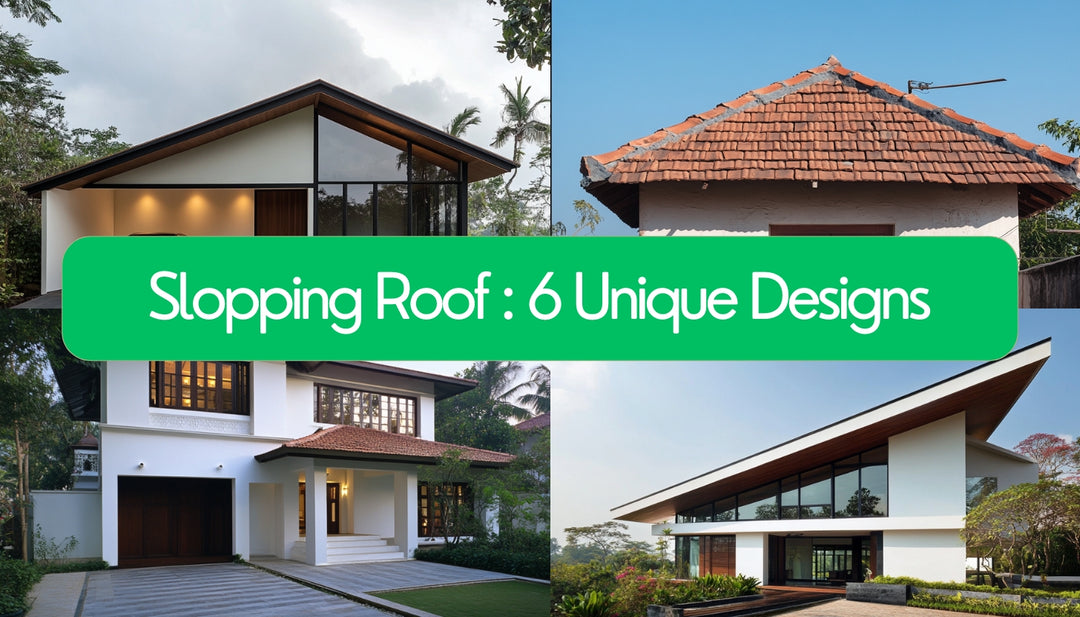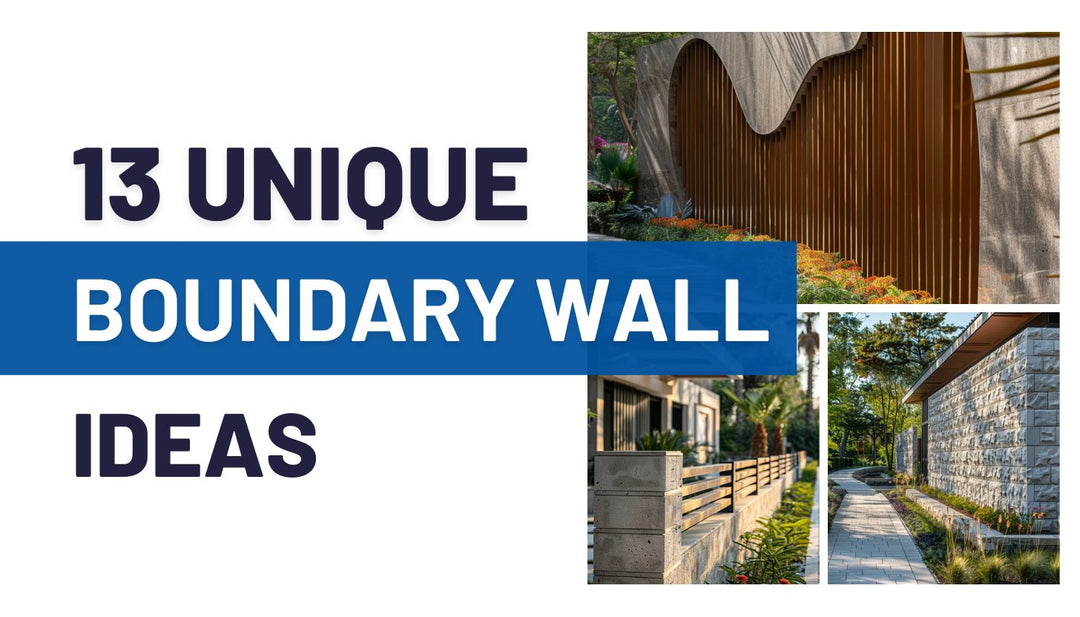Elevation Designs and the Indian Climate: Designing homes that are functional and aesthetic in various Indian climates
India is a vast country with diverse climatic conditions ranging from coastal to desert and tropical. This diversity in climate poses unique challenges when designing aesthetically pleasing yet functional home elevations. The elevation or façade of a home is the first thing that greets onlookers and can make an impression about the home even before one steps inside. Therefore, elevation designs must be climate-appropriate, not just pretty.
Overview of Major Climate Zones in India
Broadly, India can be divided into the following major climate zones:
Coastal Region
The coastal region faces high humidity, heavy rainfall, salty sea breezes and occasional cyclones. Examples would be cities like Mumbai, Chennai, Kochi, etc.
Hot and Dry Desert Region
The desert regions in India are characterised by extreme heat in summers and cold winters. Dust storms and very low rainfall is common here. Some examples are Jaisalmer, Bikaner and the Thar desert.
Tropical Wet Region
Much of India falls under the tropical wet climate region. It experiences high temperatures throughout the year along with heavy monsoonal rainfall. Cities like New Delhi, Lucknow, and Patna would fall under this zone.
Cold and Cloudy Region
The Himalayan foothills and high-altitude areas in India fall under this climate type. Low temperatures with snowfall in winter and pleasant summers are typical here. For instance, Shimla, Darjeeling, and parts of Kashmir.
Composite Region
Many Indian cities may fall under composite climate zones, which means they experience a blend of the different climate types in different seasons. For example, Pune has a composite between tropical wet and semi-arid climate.
Clearly, with such climatic diversity across the regions in India, a “one design fits all” approach cannot work when it comes to home façade designs. The elevation has to be tailored to suit the specific climatic challenges posed.
Challenges Posed by Each Climate
Let us look at some of the major problems posed by each climate type to home elevations:
Coastal Climate Challenges
- Humidity – Moisture in the air requires elevation materials that do not corrode or decay easily.
- Salty Sea Breezes – The salt can corrode façade materials and coatings. Also demands weather-resistant materials.
- Heavy Rainfall – Elevations must protect interiors from flooding and water ingress.
- Occasional Cyclones – Elevations have to be designed to withstand high-speed winds and possible impacts.
Hot & Dry Desert Climate Challenges
- Extreme Heat – Materials must withstand severe heat without deformation. Light colours help.
- Dust Storms – Elevations must protect against dust ingress, which can damage interiors.
- Water Scarcity – Designs should promote water conservation.
- Cold Winters – Proper insulation is needed to retain heat.
Tropical Wet Climate Challenges
- Heavy Rainfall – Facades should prevent water ingress. Overhang sloped roofs help.
- High Temperatures and Humidity – Materials shouldn't retain heat and should have coatings to prevent mildew.
- Potential Flooding – Elevated structures are preferred.
Cold & Cloudy Climate Challenges
- Low Temperatures and Snow – Insulation against cold is essential here.
- Heavy Rain and Hail – Waterproof and hail-resistant materials must be used.
- Frequent Fog and Mist – Condensation should not damage facades.
Composite Climate Challenges
Depending on the seasons, composite zones can face a mix of the above challenges. For instance, blistering heat in summer coupled with heavy monsoon rain. This demands using the right materials and design for the given seasons.
Designing home elevations in India requires careful consideration of the climate challenges. The façade should enhance curb appeal and withstand the regional climate.
Elevation Design Solutions for Different Indian Climates
Based on the typical climate challenges faced, here are some elevation design solutions that can work:
Coastal Climate Design Solutions
- Use weather-resistant materials like aluminium cladding or galvanised steel, which are corrosion-resistant.
- Employ fibre cement sidings which can endure coastal moisture and will not rot.
- Have overhanging roofs and wide eaves to protect walls from heavy rain.
- Elevate the structure on pillars or stilts in cyclone-prone areas to minimise impact.
- Avoid absorptive materials like untreated wood, which can decay rapidly.
- Use anti-fungal exterior paints that discourage mildew growth.
Hot & Dry Desert Climate Design Solutions
- Use light-coloured façade materials like white or pastel paint that reflect heat.
- Incorporate design elements like jaalis, pergolas and lattices that create shaded areas.
- Employ double-glazed windows to reduce heat ingress while allowing light.
- Use insulative materials in walls that work like desert cooler homes.
- Have wide roof overhangs for shading and to protect walls from dust storms.
- Orient windows and doors to maximise cross ventilation.
- Use indigenous desert vegetation like cacti in the landscape design.
Tropical Wet Climate Design Solutions
- Have sloped roofs so rainwater runs off easily.
- Elevate the structure on pillars to prevent flooding damage.
- Use porous materials like bricks that allow walls to breathe and dry.
- Incorporate large overhanging roofs to protect walls from heavy rain.
- Employ anti-fungal paint to discourage mildew growth.
- Ensure proper drainage slopes around the home to prevent water logging.
- Use indigenous plants like coconut palms in the landscape design.
Cold & Cloudy Climate Design Solutions
- Have pitched roofs so snow can slide off easily.
- Use double-glazed windows for better insulation against cold.
- Incorporate weather-resistant doors that seal properly against cold drafts.
- Employ brick jaalis instead of glass windows to reduce heat loss.
- Use thermal insulative materials like fibreglass batting in walls.
- Position balconies to receive maximum winter sunlight.
- Include coniferous vegetation in landscaping.
Composite Climate Design Solutions
- Blend solutions from relevant climates, like using insulative walls for cold winters and sloped roofs for wet monsoons.
- Employ versatile materials like bricks, which stay cool in summer and warm in winter.
- Use indigenous vegetation that thrives in the region, like neem trees.
- Incorporate multipurpose elements like jaalis that provide summer shade while letting in light during winters.
The above guidelines can inform elevation designs in different Indian climates. However, for homeowners planning construction, it is best to consult a qualified architect specialising in green and climate-responsive design. Before proposing customised elevation and home designs, they can study the site and exact climatic factors.
Role of Technology in Designing for Climate
Gone are the days when architects relied solely on physical models, drawings and prior experience for designing homes and façades. Modern technologies like simulation software and 3D rendering are transforming climate-responsive architecture.
For instance, computer simulation of a design under different climatic factors helps visualise its performance. The software can model the sun's path, wind flow, structural dynamics and more. This allows for making data-driven design decisions.
Tools like digital 3D visualisation also enable clients to immerse in their future homes well before construction starts. Photorealistic renders make designs easy to understand.
For example, Ongrid uses high-end 3D architectural visualisation to show clients how the home will appear across seasons and even virtually tour the interior spaces. This helps confirm form and function before the foundation is laid.
Technology is a potent enabler. However, the creativity and contextual expertise of the architect remain equally vital for designing elevations suitable for the Indian climate.
Case Studies Demonstrating Climate-Responsive Elevation Designs
Let us look at two examples that demonstrate successfully tackling climatic challenges through façade design:
Desert Home with Passive Cooling
This desert home in Jaisalmer uses a double façade with an open-to-sky courtyard in between. This allows air circulation, which cools the interior spaces. The external façade has jharokha-styled windows, lime plaster and exposed brick that responds to the hot and dry climate. Indigenous plants are also used for landscaping.
Cyclone Resistant Coastal Home on Stilts
Built along the Bay of Bengal coast, this home is elevated on pillars to allow storm surges to pass safely underneath. The lightweight metal roof can also withstand high wind speeds. Weather-resistant exterior materials are easy to maintain in the salty and humid coastal climate.
These examples highlight how the architects responded to the climate challenges through careful façade design. When done right, the elevation adds to the visual appeal and makes the home liveable.
Conclusion
India's diverse and often extreme climate poses unique challenges when designing home elevations. A façade must look good and be tailored to respond to the climatic context.
Factors like heavy monsoons, extreme heat, cold winds, and humidity require having suitable elevation shapes, materials, colours and features. When designed thoughtfully, elevations can become assets. For instance, wide overhangs look stylish and protect interiors from heavy rain.
Indigenous wisdom and traditional techniques are a treasure trove and can be skillfully combined with modern materials and technologies. For homeowners planning construction, it is thus strongly recommended to consult reputed architects experienced in climatic design. This ensures a façade that is aesthetically appealing and functionally optimised for the local environment.
We hope this piece provided helpful pointers on tailoring elevation designs to the diverse Indian climates. With the right expert guidance, you can have a beautiful, comfortable home that gracefully endures nature's vagaries.










